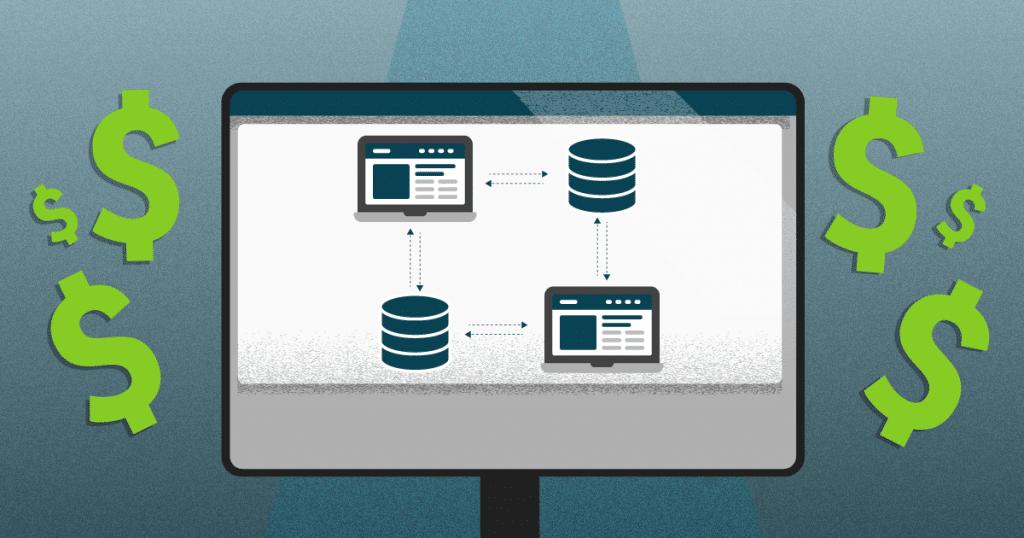In the digital world, knowledge is everywhere. That’s why you need to make data-driven pricing decisions.
That’s one of the fundamental differences between good old brick and mortar and digital. Back when consumers had limitations to their knowledge of the market—limited mobility, limited sources of knowledge—sellers had more freedom in decision making.
You could charge a much higher price than the store in the next town, or your own store located in another neighborhood. Price discrimination was a common practice that many people were not even aware of.
But online prices are transparent.
Buyers can compare prices from countless sellers effortlessly in no time. Perhaps more importantly, companies can gather and analyze competitor data to reveal each other’s strengths, weaknesses, and strategies.
Companies that harness data in pricing decisions:
- Hold competitive advantage
- Have greater control over price positioning
- Enhance profitability when there is room for it
- Successfully align pricing with their business objectives
So how do you turn your business into one of those that execute data-driven pricing decisions?
Download this post by entering your email below
5 tips to make data-driven pricing decisions
1. Know your competitors
Start by identifying other players in the market. Competitive research tools like SEMrush, MOZ, SpyFu, etc. help you identify and monitor competitors by tracking the keywords you’re competing for.
You can also conduct competitor analysis manually, by searching your target keywords on Google, social media, marketplaces and any other sales and marketing channel.
Remember that more and more businesses move online every day. Repeat this process regularly to see if a new player pops up.
In any case, you must be able to read data. Data literacy is an important asset for any business owner. If you’re running an online business, it’s a must-have. It helps you:
- Make efficient and effective decisions
- Understand ROI better
- Have a better understanding of your clients’/customers’ needs and interests
- Follow market trends
Train yourself and your team on data literacy to integrate it to your company culture.
2. Know market prices
Modern consumers are price-sensitive, and they have all the reasons to be prudent spenders. Research shows that mandatory spending has increased between 2010 and 2017.
Interestingly, however, there is no significant increase in discretionary income—what’s left to the consumer after providing necessities.
So, if the consumer is price sensitive, it’s best to make sure you have fair prices. How?
In competitive markets, prices change frequently. Manual tracking efforts kind of go in vain, since it takes too much time that you end up with obsolete or entirely invalid data.
If you’re selling in a highly competitive market like retail, some level of automation is certainly necessary. Let’s better understand with two examples.
This store here is charging £555 more for the same item. The problem here is that fat profit margins do not guarantee good profit. Here, it’s pushing shoppers away.
Whereas this store here leaves money on the table because they don’t increase prices when there is room for it.
The two stores above are either not tracking competitors or doing it manually, so they can’t find time to use the data before it’s too late. So, what’s an effective way to collect pricing data?
It goes without saying, you need some level of automation. You can either have a company or developer(s), or a web scraping service build a price tracking engine customized to your needs, or use price tracking software, which is less customizable but much more affordable.
This way or another, you’re now collecting competitor price information. What’s next?
3. Choose the right positioning
How buyers perceive your prices is perhaps more important than how much you actually charge them. So how do they assess the fairness of your prices?
A buyer’s willingness to pay depends on many factors like
- A person’s income level
- The situation of the economy
- Alternatives of the product you’re selling
- Perceived quality of the product
- Brand image
- The emotional benefits they get from using the product
- The self-expressive benefits they get from using the product
- Reference prices
You can’t possibly increase a person’s income level, or improve the situation of the economy. Neither can you get rid of the alternatives for your product.
Surely you can—and should—work on building a strong brand, growing a highly engaged customer base, making data-driven pricing decisions, and improving the perceived quality of your product.
So there are some ways you can increase a buyer’s willingness to pay for a product or service. But it’s a marathon, not a sprint.
The bottom line is, there is no one-size-fits-all strategy for all your products. Consider these factors when pricing your products/services.
But one piece of information that’ll help you right away is that people refer back to their previous experiences when they see a new price.
For instance, even if you can’t recall how much you’re paying for a streaming service, you know it shouldn’t cost you $100. It is way above your reference price—that you formed based on your previous experiences.
Luckily, you’ll have market prices in front of you from now on. Meaning, you’re monitoring the price points shoppers see every day (external reference prices).
Most online businesses have a good number of both direct and indirect competitors. In crowded markets where there are a significant number of alternatives to what you sell, below-average prices will help you get new customers and maintain a good relationship with them.
Amazon, for example, has gained a reputation for being the cheapest. For all we know, that’s not the case. But loyal Amazon shoppers still believe so. The company made it seem like it has the cheapest deals more often than others by consistently offering good deals on popular products.
4. Set dynamic pricing rules
Dynamic pricing is a strategy where you use a repricing algorithm that allows you to adjust your pricing to changing market conditions.
These rules can be based on your costs, target profit margins, competitor prices, and so on.
For example, if you want to match a competitor’s price or beat it, set dynamic prices that are adjusted whenever they change their price.
- My price should be 5% cheaper than my cheapest competitor
To make sure you’re not selling below cost, you can add cost-based rules too.
- My price should be $15 cheaper than the average price but never lower than my cost + 4%.
Flexibility eliminates the risks coming from an uncertain environment.
For example, many businesses face financial challenges today, and some are experiencing deferred demand. Some resort to deep price cuts to clean their inventory, some implement sharp price increases to cover increasing costs.
Deep discounting is not the best approach to this crisis, considering the fact that it may not stir up demand, while it’ll likely destroy value and often initiate price wars.
So, how do you react to a cumulative decrease in price?
Well, you want to stay competitive, so if the market prices are falling, you’ll cut prices. But on the other hand, you don’t want to leave money on the table, so if the market prices hike, you want to increase yours immediately. Finally, you don’t want to bleed money, so you want to make sure you’re not selling below cost.
Set a repricing rule:
- My price should be equal to the market average, but not lower than my cost + 5%.
5. Analyze historical data
A while after you start collecting competitor data, you’ll notice some patterns in their behavior.
- Which times of year they implement a price increase?
- How long do they wait between two discount campaigns?
- Do they offer storewide discounts, or do they focus on a particular category/brand?
- Do they hike up prices before Black Friday and Cyber Monday?
These insights—and more—that you can get out of historical data analysis will help you develop counter-strategies in the long run.
For example, if you can’t sell a product because you can’t compete on price, it’s likely that your competitors have a significant cost advantage or they get a better deal from the supplier. You can either ask for a better price from your supplier or stop selling it.
In other words, analyzing historical data will help you fully understand in which categories/brands you have a competitive advantage, which products are more profitable for you, how you can improve your profitability by changing your prices or assortment, etc.
Final Words
When it comes to pricing, cost-based price settings, or relying on your gut won’t work anymore. Online prices are transparent and the modern consumer is price sensitive.
Data is everywhere in the digital sphere, and big tech companies have been using it to strengthen their dominance for years. Today, data is more democratized. More companies have access to data thanks to affordable data-collection and analysis tools.
Identify your competitors and start making data-driven pricing decisions. Don’t forget that it must be a continuous process so that you always know market prices.
Use the data to set dynamic prices that’ll change when market conditions change. Analyze historical data to reveal competitor behavior and develop counter-strategies.
About the author
Author Bio: Basak Saricayir is the content marketer at Prisync which helps E-commerce companies increase sales by tracking prices automatically from any marketplace around the world.







